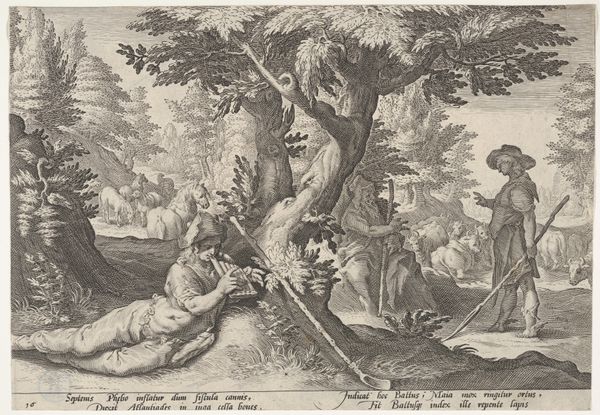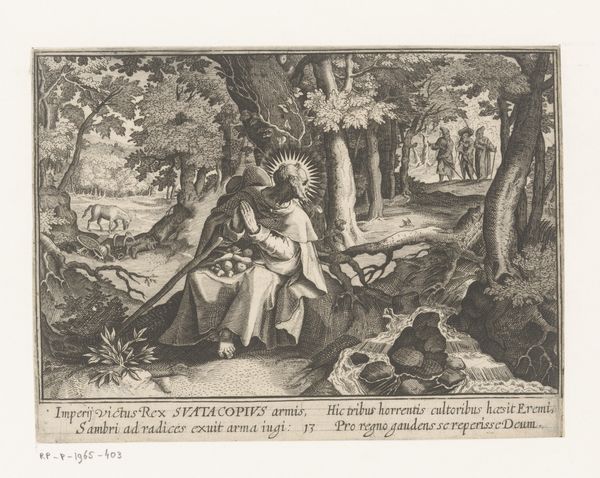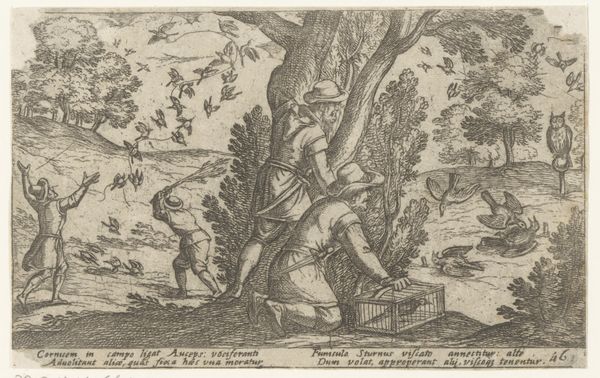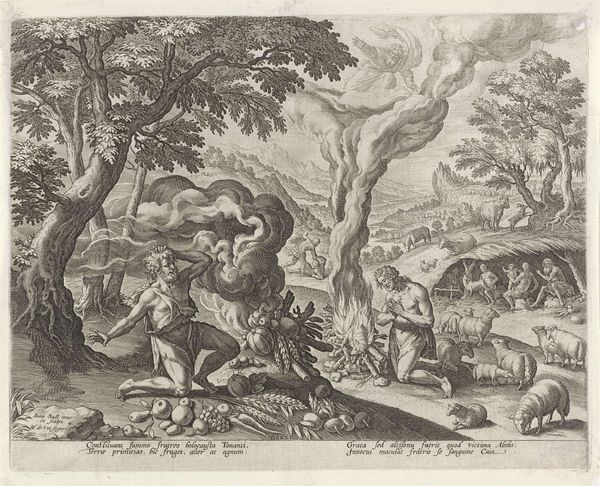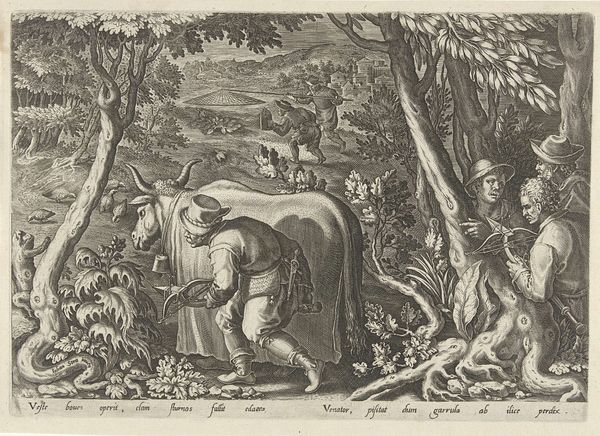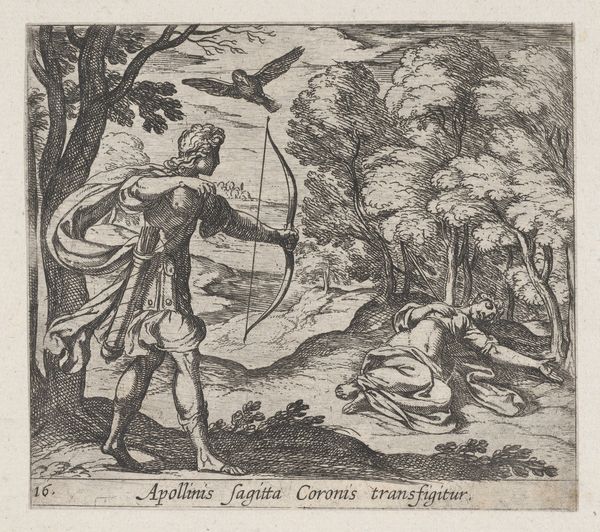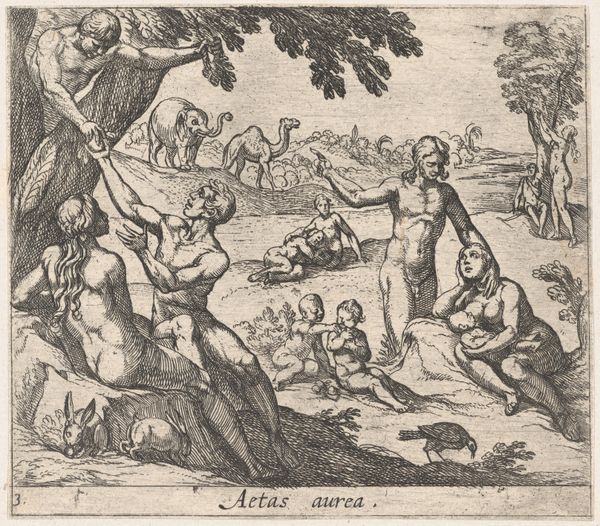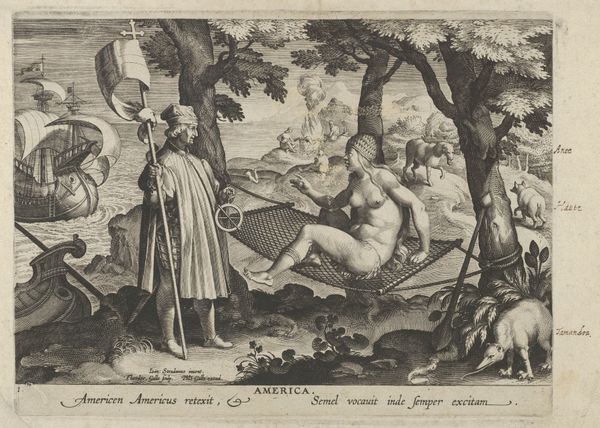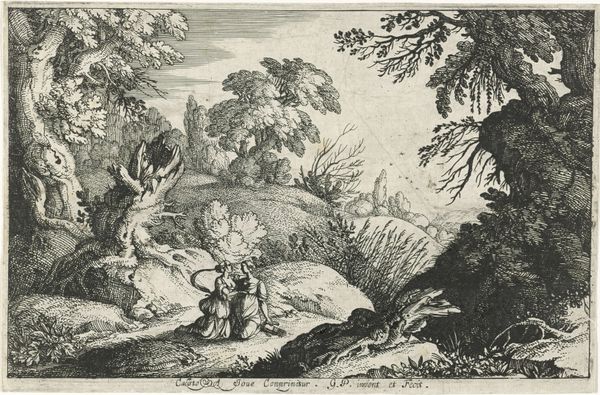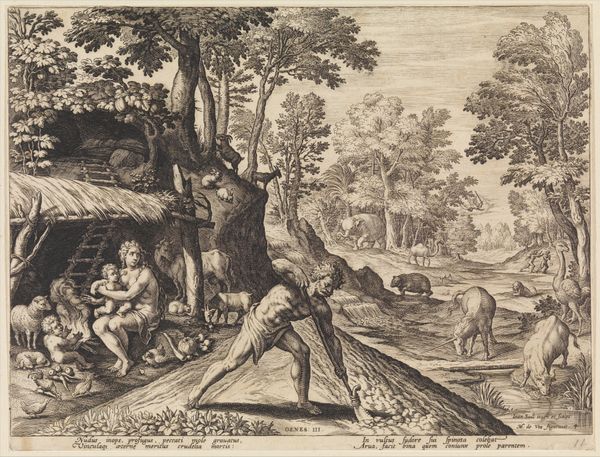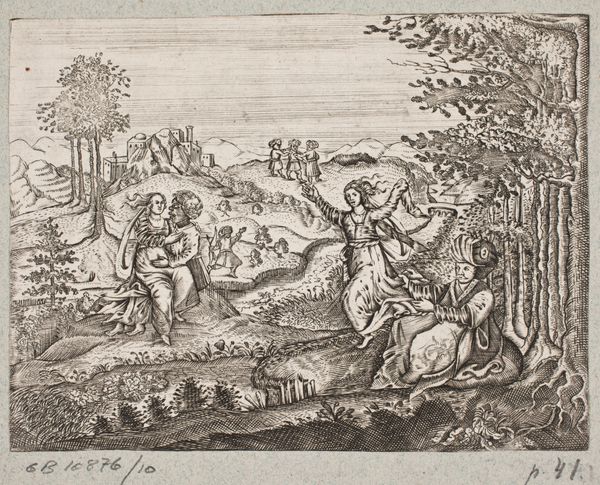
Plate 13:Jupiter and Callisto (Calisto a Iove comprimitur), from Ovid's 'Metamorphoses' 1606
0:00
0:00
drawing, print, engraving
#
drawing
#
ink drawing
#
baroque
# print
#
pen sketch
#
dog
#
landscape
#
figuration
#
line
#
history-painting
#
engraving
Dimensions: Sheet: 4 1/8 × 4 5/8 in. (10.4 × 11.8 cm)
Copyright: Public Domain
Curator: Today we're looking at Antonio Tempesta’s "Plate 13:Jupiter and Callisto" from Ovid's 'Metamorphoses', an engraving created in 1606. It's part of the collection at the Metropolitan Museum of Art. The stark, graphic quality immediately grabs attention, doesn’t it? Editor: It does. My initial feeling is… ominous. The density of the linework creates a somber, almost claustrophobic atmosphere, despite being set in a landscape. I am instantly drawn to the process itself, to the marks, the etched lines into the metal plate—the repetitive physical action required. Look at the textures he creates, contrasting densely worked areas against the stark white paper! What sort of printing practices were standard at that period, given the detail here? Curator: Well, given it illustrates a rather disturbing scene—Jupiter's seduction of Callisto—that somber feel may well be intentional. There's so much encoded in this seemingly simple image. Consider, for instance, how Tempesta uses the crescent moon headdress. It clearly signals Callisto's identity as a follower of Diana, goddess of the hunt, emphasizing her vulnerability and the sacrilege of Jupiter's actions. The symbolism resonates through layers of meaning here. Editor: Yes, and speaking of layers, consider the consumption of prints like these during the 17th century. This piece was meant for circulation, easy duplication, and was a popular medium, cheaper and more accessible, expanding who had access to imagery beyond painting. Think about the role of workshops, collaboration, and the business side of the art; artmaking wasn’t an individual act. How did workshops operate? Curator: Precisely! Tempesta likely had assistants. It raises questions about authorship and value—what makes this more than just reproductive labor? Look how Jupiter seems to literally encompass and constrain Callisto. Her attempts to pull away, the anxiety etched on her face... The dog off to the side also acts as a symbolic marker here: an attribute that signals the hunt or loyalty. Editor: I like your point about constraint and consumption. Did viewers recognize artistic “brands," for lack of a better word? Also, I noticed Tempesta chose engraving specifically as the technique. How did that decision feed the meaning beyond reproductive capabilities, especially given the density of linework required here. This feels deeply connected to the political dimensions and labor involved in making these. Curator: Absolutely. The use of engraving likely lends itself to a sharper level of detail, reinforcing that narrative clarity. I find myself wondering about Tempesta’s intentions: was it pure illustration? Or was he critiquing power structures and moral decay through the guise of mythology? Editor: It all leads me back to questions about materials, and how access impacts how we define the value and cultural significance of the artworks in comparison to painting practices in Baroque culture at large. Curator: A fruitful discussion indeed! Examining Tempesta’s print with both our lenses has revealed fascinating insights into its making, circulation, and lasting symbolic weight.
Comments
No comments
Be the first to comment and join the conversation on the ultimate creative platform.
